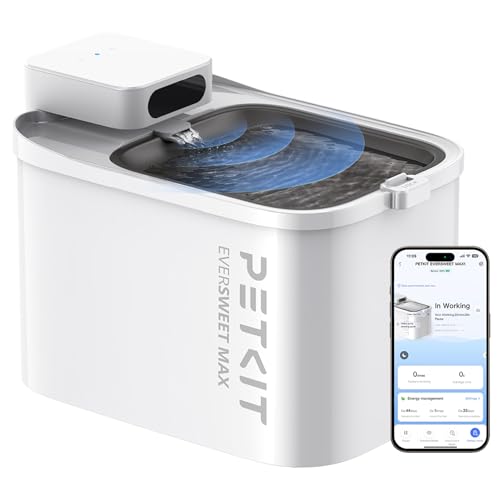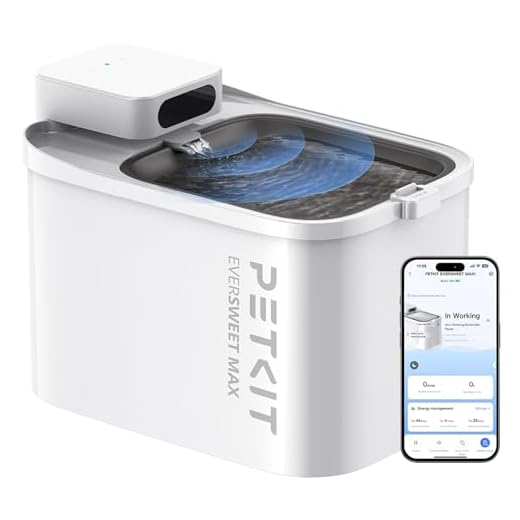




Typically, a canine remains a source of infection for about 10 to 14 days following the onset of symptoms. This timeframe is crucial for pet owners to consider as they plan interactions with other animals.
During the recovery phase, the shedding of the virus can still occur, meaning that even after your pet shows signs of improvement, caution is warranted. It’s advisable to limit exposure to other canines until you have confirmation from a veterinarian regarding the cessation of viral shedding.
In my experience, keeping your furry friend isolated during this period not only protects other animals but also allows for a smoother recovery. Regularly cleaning the environment and monitoring your pet’s health are key steps to ensure a safe transition back to normal socialisation.
Consulting with a vet for precise guidance tailored to your situation is a wise move. Each case can vary, and professional advice will help you make informed decisions about your pet’s health and safety.
Duration of Contagion Post-Illness
Canines can remain infectious for several weeks even after they seem to be back to their usual selves. Typically, the shedding of the virus may continue for about 3 to 4 weeks following the initial signs of illness. It’s essential to keep them isolated during this period to prevent the spread to others.
Monitoring and Precautions
Vigilance is key. Regularly consult with your vet to determine the appropriate timeline for reintroducing your pet to social environments. While some may appear completely healthy, the virus can still be present in their system, so limit interactions with other animals until you receive confirmation that they are no longer shedding the virus.
Vaccination as a Preventive Measure
Ensure that your other pets are up to date on vaccinations. This not only protects them but reduces the risk of any future outbreaks. Regular check-ups and maintaining a clean environment are vital steps in safeguarding your furry companions from infectious diseases.
Understanding Canine Parvovirus and Its Lifecycle
Canine parvovirus, often referred to as CPV, primarily affects puppies and unvaccinated adults. This virus is highly resilient, surviving in various environments for extended periods. It can withstand extreme temperatures and desiccation, making it a formidable foe for pet owners. The virus is transmitted via the faeces of infected animals, which can contaminate surfaces, food, and water sources, leading to outbreaks in kennels or parks.
Lifecycle of Canine Parvovirus
The lifecycle of CPV consists of several stages. Once the virus enters the host, it begins to replicate rapidly in the intestinal lining and bone marrow, leading to severe gastrointestinal distress and immunosuppression. Symptoms typically appear within three to seven days post-infection. The shedding of the virus can occur even before visible signs manifest, which complicates control measures.
Environmental Persistence
This virus can remain viable in the environment for months, necessitating rigorous cleaning protocols. Disinfectants containing bleach are effective against CPV, while standard cleaning agents may fall short. Regularly sanitising areas where pets are housed or play is essential to prevent reintroducing the virus, especially in places where multiple animals gather.
Signs of Recovery in Dogs Post-Parvo Infection
One of the first indicators that your pet is on the mend is an increase in appetite. After a period of severe gastrointestinal distress, a gradual return to eating normally is a positive sign. Monitor their interest in food, as this often reflects their overall health improvement.
Another key signal is energy levels. As your companion starts feeling better, expect to see them more active and playful. You might notice them engaging in their favourite activities or showing enthusiasm for walks. This newfound zest is a clear indication that their body is healing.
Improved Hydration and Bathroom Habits
Hydration plays a crucial role in recovery. Keep an eye on their water intake. A return to normal drinking habits, along with consistent urination, suggests that their body is stabilising. Additionally, watch for regular bowel movements. If your pet is able to defecate without difficulty, it’s a good sign that their digestive system is returning to normal function.
Positive Behaviour Changes
Behavioural changes can also reveal a lot about their recovery process. A dog that begins to seek out human interaction, wag their tail, or show signs of affection is likely feeling much better. Pay attention to their demeanour; a shift toward a happier and more engaged personality can indicate that they are overcoming the effects of the illness.
Duration of Contagiousness After Symptoms Subside
A canine can remain infectious for several weeks, even once showing signs of improvement. It’s crucial to monitor their environment and interactions during this period.
Once symptoms diminish, a pet may still excrete the virus in their faeces for approximately 3 to 4 weeks. Here’s what you should keep in mind:
- Continue isolating your furry friend for at least a month post-recovery.
- Avoid contact with other canines, especially those not vaccinated against this virus.
- Maintain strict hygiene by cleaning any contaminated areas thoroughly.
Regular vet check-ups are advisable to ensure your companion is genuinely on the mend. During this recovery phase, providing proper nutrition is paramount. Consider looking into best dog foods for older dogs to support their health.
While the risk of transmission decreases as they heal, vigilance remains necessary to prevent spreading this serious illness. Always consult your veterinarian with any concerns regarding your pet’s health and recovery process.
Precautions to Take During the Recovery Phase
Isolate the pet in a clean, designated area. This helps prevent exposure to other animals and reduces the risk of re-infection. Create a comfortable space with minimal distractions and easy access to fresh water and food.
Thoroughly sanitise any items the animal interacts with, including bedding, bowls, and toys. Use a bleach solution (1 part bleach to 30 parts water) to kill the virus on surfaces. Ensure proper ventilation while cleaning.
Limit outdoor activities until the veterinarian gives the green light. Avoid dog parks and social gatherings, as these places can harbour pathogens. Short, supervised walks on a leash are preferable to allow for gradual reintroduction to the outside world.
Monitor dietary intake. Offer bland, easily digestible food, gradually transitioning back to normal meals. Keep an eye on appetite and bowel movements, as these can indicate ongoing health issues.
Stay vigilant for any signs of complications during the healing period. Symptoms such as lethargy, vomiting, or diarrhoea should prompt immediate veterinary attention. Regular check-ups will help ensure the recovery process is on track.
Keep up with vaccinations and discuss a follow-up schedule with your veterinarian. This helps to strengthen the immune system and protects against potential future infections.
Maintain good hygiene practices. Wash your hands after handling the pet or cleaning its area. This prevents the spread of harmful pathogens to other animals and humans.
Provide emotional support and reassurance. Spend quality time with the pet, engaging in gentle play and affection. This can aid in emotional recovery and strengthen the bond during this vulnerable time.
When to Consult a Veterinarian for Post-Parvo Care
If symptoms persist beyond a week following the initial treatment, seeking veterinary advice is vital. Even if your pet shows signs of improvement, underlying issues may arise that require professional evaluation.
Monitoring hydration levels is crucial. If your companion exhibits signs of dehydration, such as dry gums or excessive lethargy, a visit to the vet is warranted. Rehydration is essential for full recovery, and your vet can provide the necessary interventions.
Changes in appetite or continued gastrointestinal disturbances also warrant a check-up. If your furry friend refuses food for more than 24 hours or experiences vomiting or diarrhoea that doesn’t resolve, veterinary assistance should be sought.
Keep an eye on energy levels. If your pet seems overly tired or uninterested in normal activities, this could indicate complications needing attention. Regular check-ins with your vet can help monitor recovery progress.
In cases of sudden changes in behaviour, such as aggression or extreme anxiety, don’t hesitate to consult a professional. These signs can indicate stress or discomfort from the illness or its treatment.
| Sign | Action |
|---|---|
| Persistent symptoms after a week | Consult a veterinarian |
| Signs of dehydration | Seek immediate veterinary care |
| Loss of appetite for over 24 hours | Schedule a vet appointment |
| Low energy levels | Monitor closely, consider vet visit |
| Behaviour changes | Contact a veterinarian |
Regular follow-ups may be necessary for the best outcome. Your vet can guide you on the appropriate timeline for check-ups based on your companion’s specific needs. Prioritising these visits will support a smooth transition back to a healthy lifestyle.







